Image of the Day: April 2011
You Can't Have Your Shuttle and Eat It Too
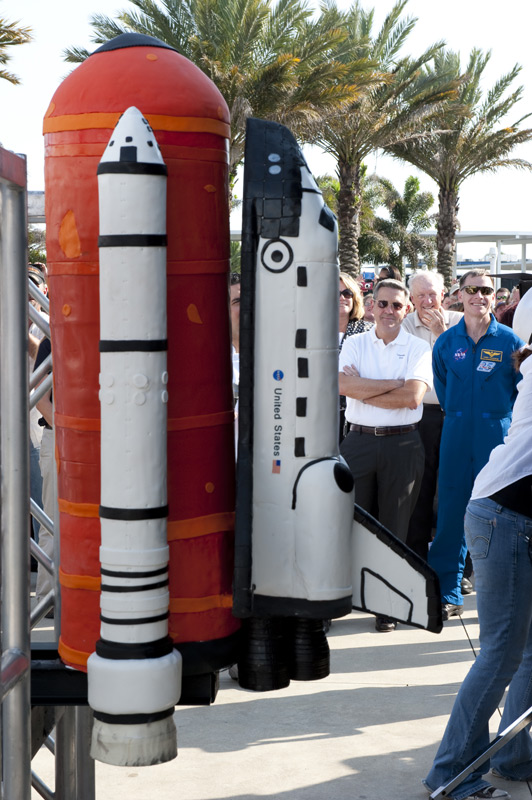
Monday, April 18, 2011: At NASA's Kennedy Space Center Visitor Complex in Florida, this shuttle-shaped cake appeared following NASA Administrator Charles Bolden's announcement regarding the retirement locations of the four orbiters. Created by Buddy Valastro of Carlo's Bakery ("Cake Boss"), the cake's engines amazingly fired, and the cake rose a few inches into the air. However, the cake was unable to clear the launch tower, and failed to achieve escape velocity.
—Tom Chao
Stand Before the Mirror
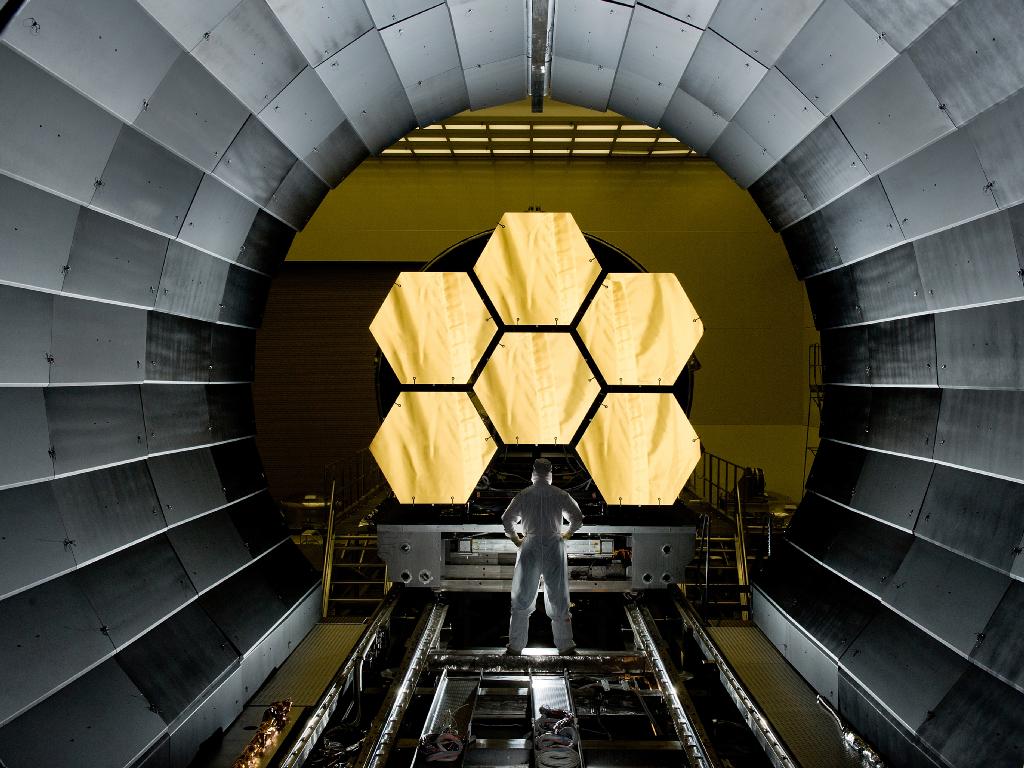
Tuesday, April 19, 2011: NASA engineer Ernie Wright holds a dramatic pose in front of the first six flight-ready James Webb Space Telescope's primary mirror segments at NASA's Marshall Space Flight Center. Engineers began final round-the-clock cryogenic testing on the mirrors before integrating them into the telescope's structure.
—Tom Chao
Magnification
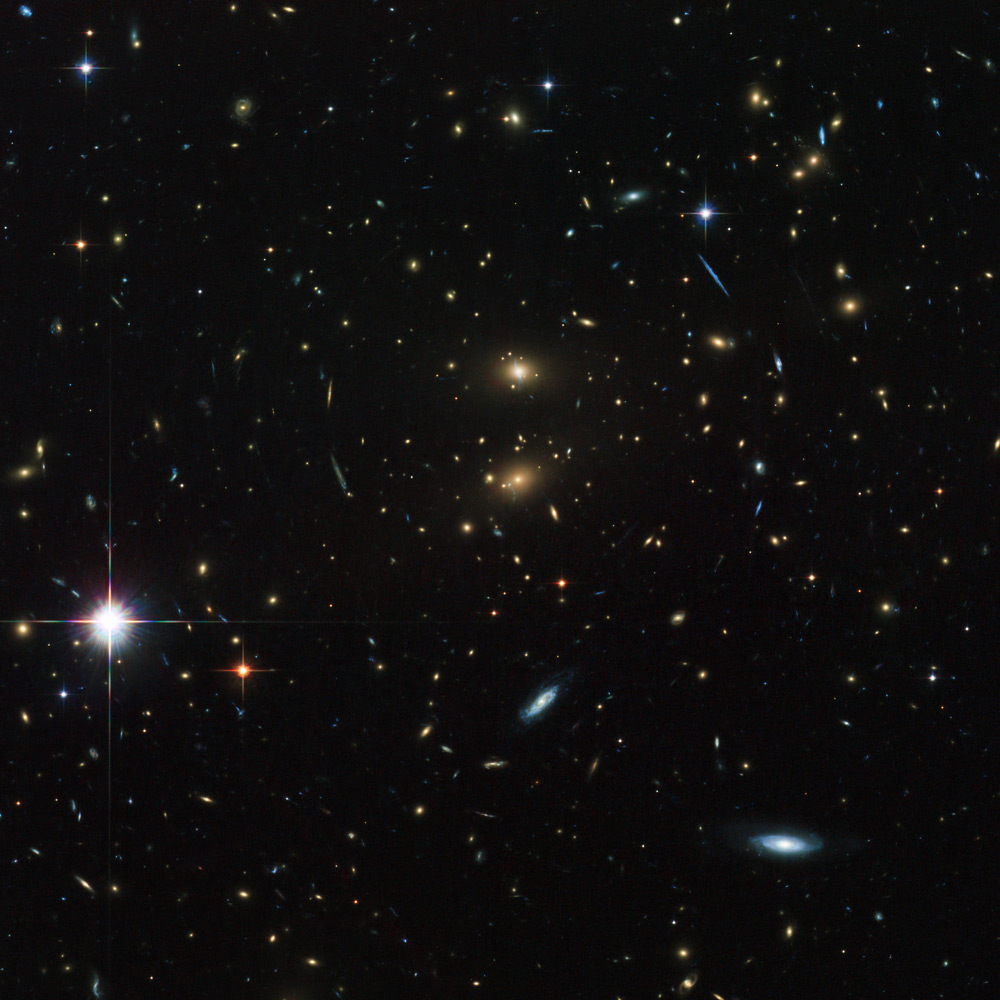
Wednesday, April 20, 2011: This Hubble Space Telescope image shows galaxy cluster LCDCS-0829. The huge mass of the galaxies in the cluster acts as a giant magnifying glass, in an effect called gravitational lensing.
—Tom Chao
Fire on the Mountain
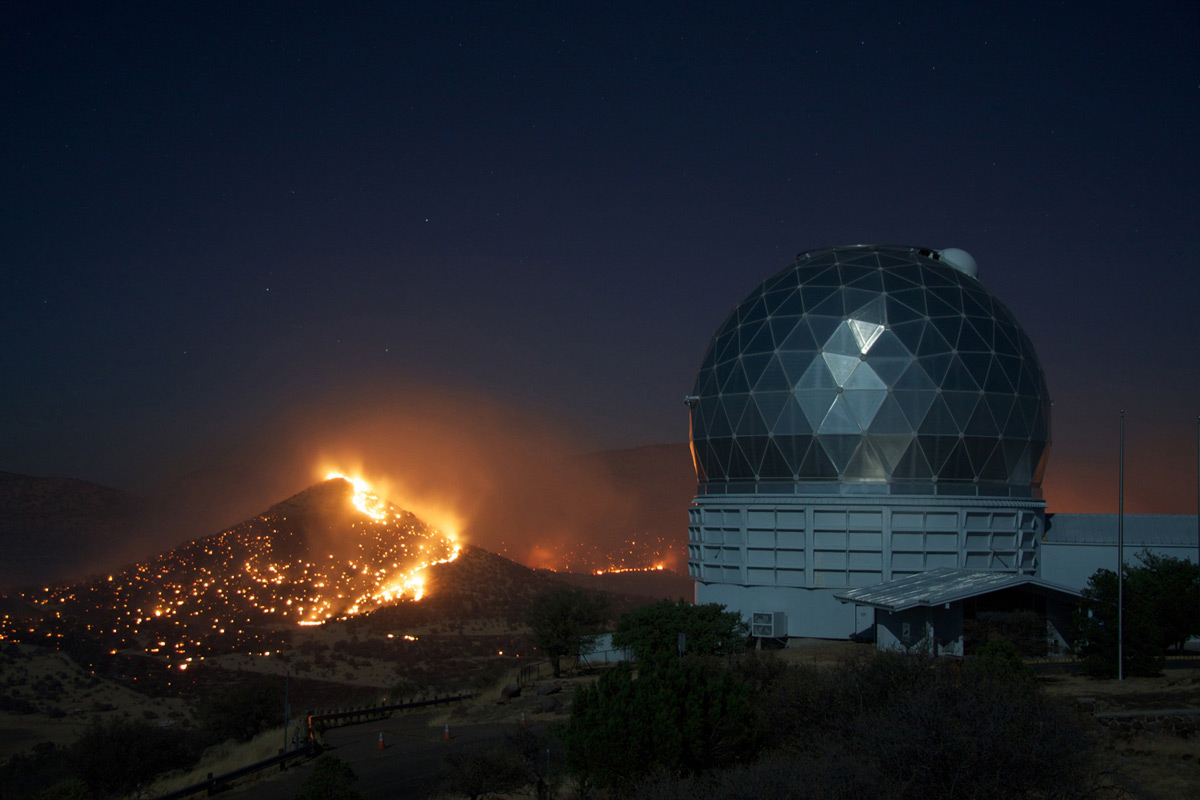
Thursday, April 21, 2011: At the McDonald Observatory in West Texas, the nearby Guide Peak can be seen on fire, almost completely burned, on April 17, 2011, during a series of severe wildfires in the region. The observatory's Hobby-Eberly Telescope stands at right.
—Tom Chao
Dancing on the Sun
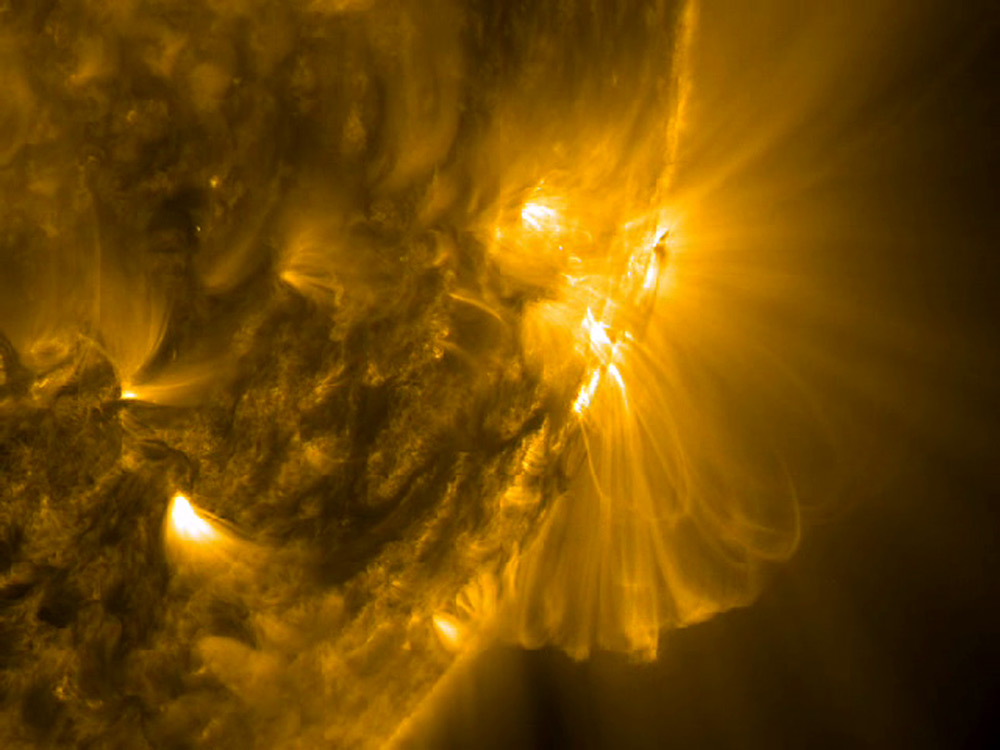
Friday, April 22, 2011: Charged particles spin along magnetic field lines extending from the sun's surface, visually observable in extreme ultraviolet light by the Solar Dynamics Laboratory spacecraft, Apr. 3-5, 2011.
—Tom Chao
Hanging Around
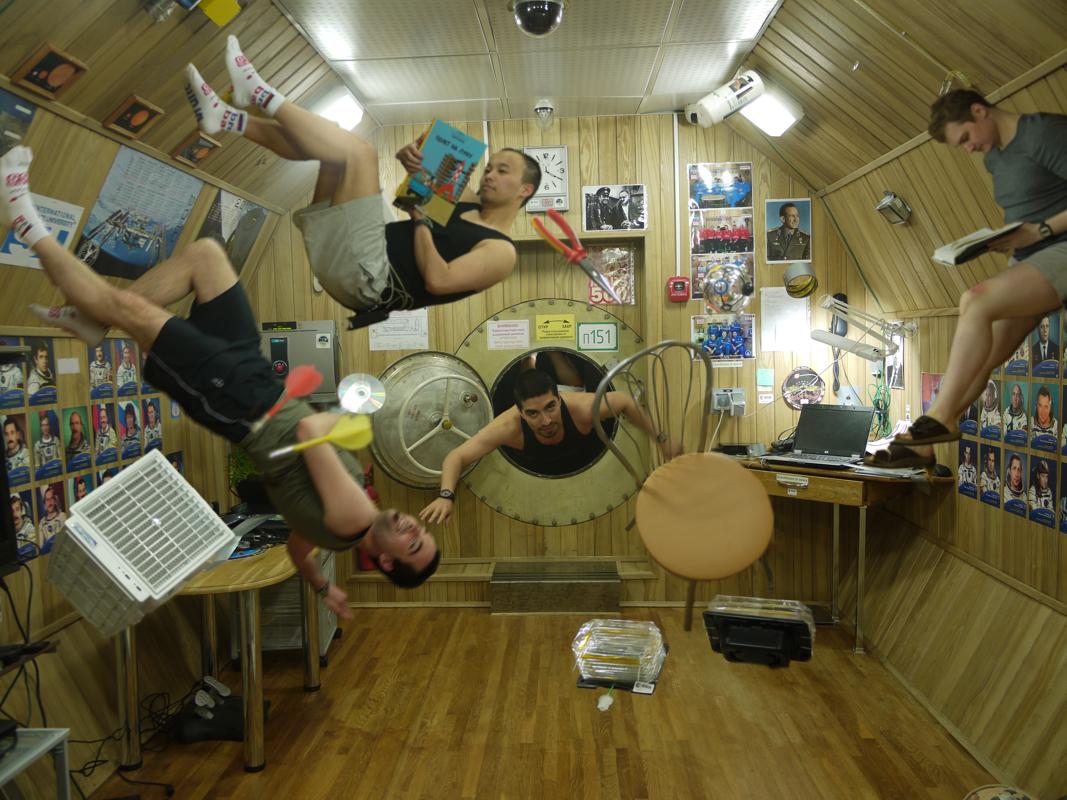
Monday, April 25, 2011: Diego Urbina (@diegou) of the Mars500 project tweeted on April 1, 2011: "http://yfrog.com/h2d2m77j Finally fixed the anti-gravity generation device! Finalmente abbiamo sistemato il sistema anti-G! YES."
—Tom Chao
Where the Sun Doesn't Shine
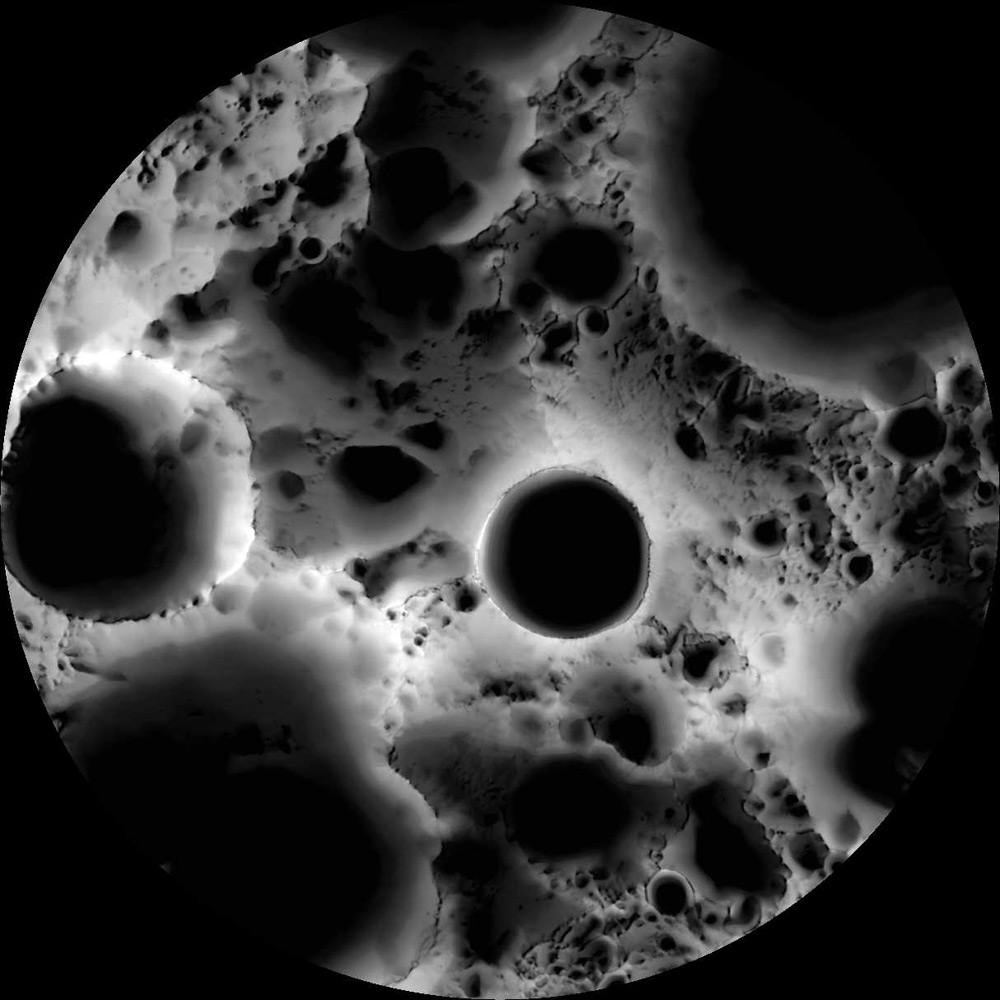
Tuesday, April 26, 2011: The Lunar Reconnaissance Orbiter created this image of the moon's south pole, showing shapes reminiscent of cosmic ice or clouds. Not a single photograph, the image combines 1,700 images collected over 6 lunar days (6 Earth months) into a multi-temporal illumination map. Analyzing the digitized images, each pixel in the map represents the percentage of time each spot on the moon's surface was illuminated by the sun. Since the moon's spin axis remains almost perpindicular to the ecliptic plane, some areas near the lunar poles can stay in permanent darkness or nearly continuous sunlight. The Shackleton Crater lies at near the center of the map.
—Tom Chao
Get the Space.com Newsletter
Breaking space news, the latest updates on rocket launches, skywatching events and more!
Movin' Out
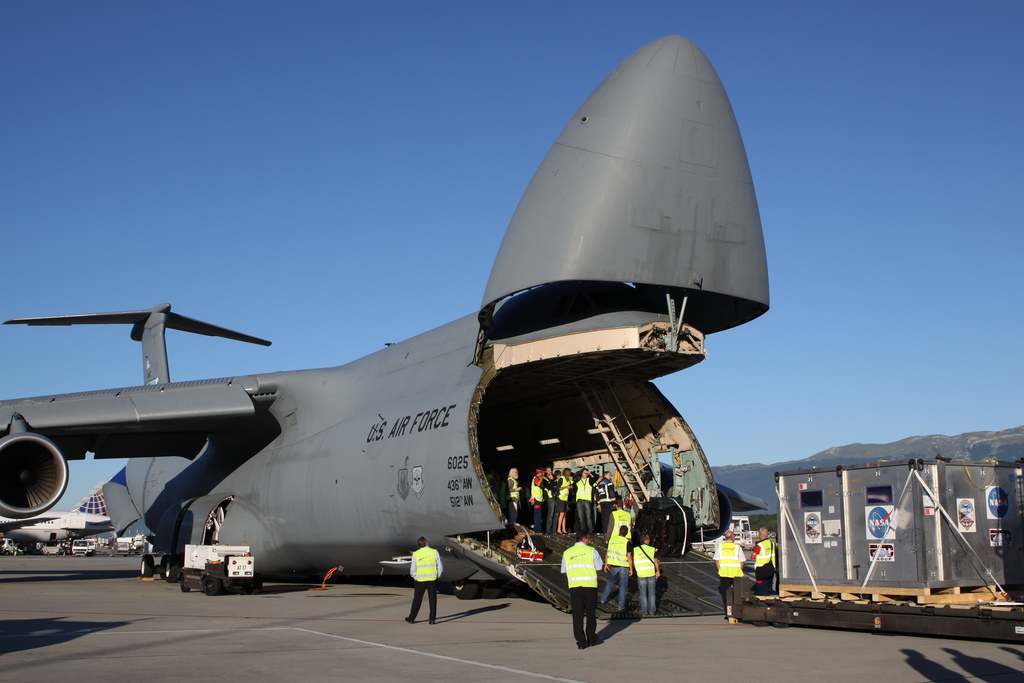
Wednesday, April 27, 2011: The Alpha Magnetic Spectrometer (AMS), an instrument that will search for antimatter and dark matter in space, will fly aboard space shuttle Endeavour to the International Space Station, during a mission set to launch on Friday, April 29, 2011. Back on August 25, 2010, workers loaded the AMS (inside metal box at right) aboard a giant U.S. Air Force Galaxy jet for a flight from Geneva International Airport to the Kennedy Space Center in Florida.
SPACE.com is moving, too! We depart from our old office today, but the Image of the Day and our other features will continue without delay.
—Tom Chao
Electrical Storm
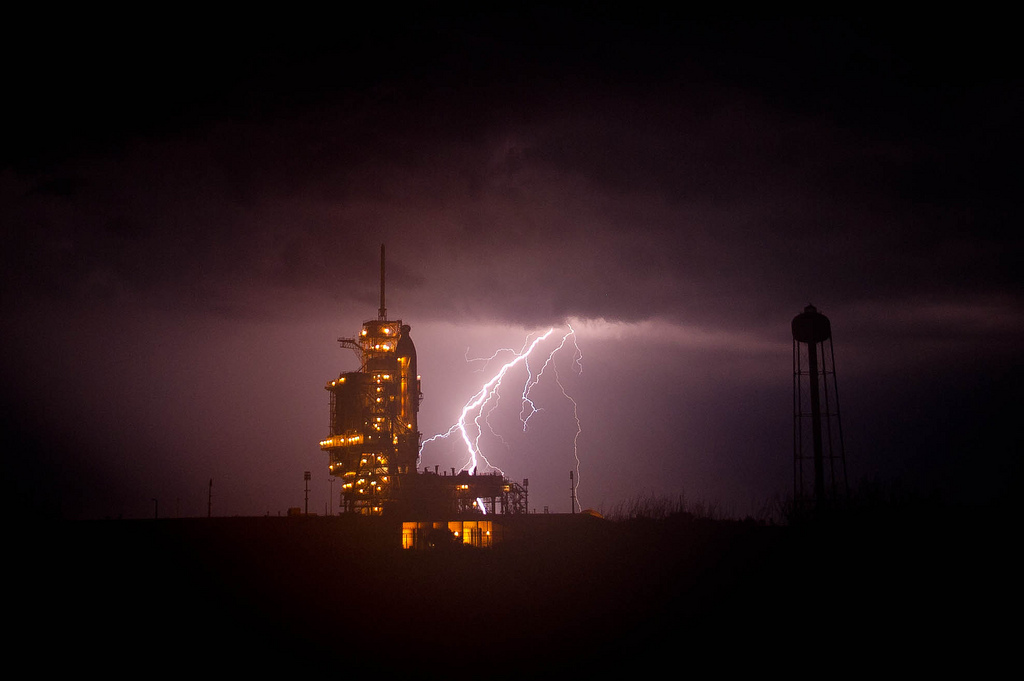
Friday, April 29, 2011: Lightning strikes near space shuttle Endeavour, waiting on launch pad 39a at Kennedy Space Center in Cape Canaveral, Fla., Thursday, April 28, 2011. NASA has scheduled Endeavour's STS-134 mission for launch on Friday, April 29 at 3:47 p.m. EDT.
—Tom Chao
Reflections in Blue

Thursday, April 28, 2011: Interstellar molecular clouds shine with light from nearby luminous stars, creating reflection nebula NCG 1333. Carbon and silicon atoms in the cloud's molecules scatter blue light more efficiently than red light, producing the distinctive color.
—Tom Chao
Join our Space Forums to keep talking space on the latest missions, night sky and more! And if you have a news tip, correction or comment, let us know at: community@space.com.

Space.com is the premier source of space exploration, innovation and astronomy news, chronicling (and celebrating) humanity's ongoing expansion across the final frontier. Originally founded in 1999, Space.com is, and always has been, the passion of writers and editors who are space fans and also trained journalists. Our current news team consists of Editor-in-Chief Tariq Malik; Editor Hanneke Weitering, Senior Space Writer Mike Wall; Senior Writer Meghan Bartels; Senior Writer Chelsea Gohd, Senior Writer Tereza Pultarova and Staff Writer Alexander Cox, focusing on e-commerce. Senior Producer Steve Spaleta oversees our space videos, with Diana Whitcroft as our Social Media Editor.









